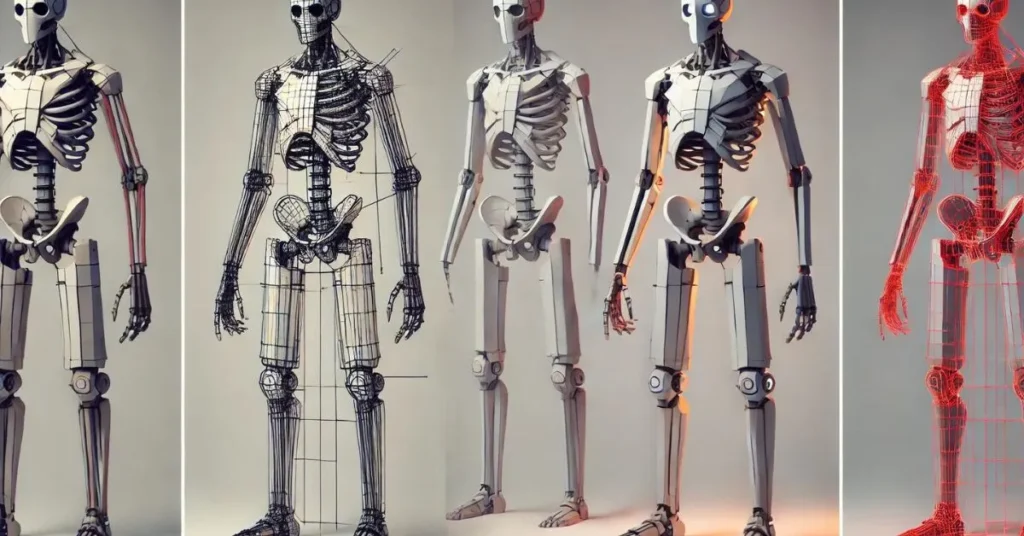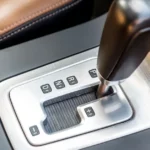The world of 3D modeling has gained immense popularity in recent years. Creators are using this technology to bring characters to life in games and animations. One notable figure in this space is Wendigoon, a character that has captured the attention of many fans.
Wendigoon is known for his unique style and engaging personality. He has built a strong presence in the online community, particularly in horror-themed content. As his popularity grows, so does the interest in creating 3D models of him.
This blog post will explore the Wendigoon 3D model in detail. We will begin by looking at who Wendigoon is and why he matters. Understanding the character’s background helps appreciate the artistry behind the 3D model.
Next, we will delve into the technical aspects of the model itself. We will discuss the software used in its creation and the design elements that make it stand out. By breaking down the modeling process, readers will gain insight into how such characters are crafted.
We will also highlight the applications of the Wendigoon 3D model in gaming and animation. This will include examples of how the model can be used in various projects. Additionally, we will provide tips for aspiring 3D artists interested in character design.
By the end of this post, readers will have a better understanding of the Wendigoon 3D model. They will be encouraged to explore their own creativity in the world of 3D modeling.
Understanding Wendigoon
Overview of Wendigoon as a Character
Wendigoon is a popular character in the online community. He is known for his distinctive look and engaging storytelling. His content often revolves around horror themes and mysterious topics.
Background and Origin
Wendigoon started his journey as a content creator on platforms like YouTube. He quickly gained a following due to his unique style and humor. Fans appreciate his ability to blend entertainment with intriguing narratives.
Role in the Online Community
Wendigoon has become a significant figure in the horror content niche. He connects with his audience through relatable stories and captivating visuals. His influence extends beyond just videos; it includes merchandise and community interactions.
Popularity and Cultural Impact
The popularity of Wendigoon has sparked a vibrant fan base. Fans create art, memes, and even their own content inspired by him. This cultural impact highlights the importance of character design in engaging communities.
The 3D Model: A Technical Overview
Description of the Wendigoon 3D Model
The Wendigoon 3D model is a digital representation of the character. It captures his distinctive features and overall aesthetic. The model showcases intricate details that reflect his personality.
Design Elements
The design includes unique shapes, colors, and textures. These elements make the model visually striking. The attention to detail helps convey the character’s essence.
Unique Features
One of the standout features is the model’s facial expressions. This allows for a range of emotions during animation. The rigging adds flexibility, making it suitable for various projects.
Software Used for the Model
Creating the Wendigoon 3D model involves specific software. Popular choices include Blender and Maya. These tools offer powerful features for modeling and animation.
3D Modeling Software
Blender is a free and open-source option. It is widely used by both beginners and professionals. Maya is a paid software known for its advanced capabilities.
Texturing and Rendering Tools
Texturing tools enhance the model’s visual appeal. Programs like Substance Painter are commonly used for this purpose. Rendering software helps bring the model to life with realistic lighting and shadows.
Creation Process of the Wendigoon 3D Model
Concept Art and Initial Design
The creation of the Wendigoon 3D model begins with concept art. Artists sketch ideas to visualize the character. This step is crucial for defining the overall look and feel.
Importance of Concept Sketches
Concept sketches serve as a guide during modeling. They help maintain consistency in design. Artists can explore different styles before finalizing the look.
Iterative Design Process
The design process is often iterative. Artists make revisions based on feedback and new ideas. This allows for continuous improvement of the character design.
Modeling Techniques
Creating the base mesh is the first step in 3D modeling. This involves shaping the character’s form using basic geometry. Artists then refine the mesh to add more details.
Base Mesh Creation
A solid base mesh provides a good foundation. It defines the character’s proportions and structure. This is an important step before adding finer details.
Detailing and Refinement
After the base mesh, artists focus on detailing. This includes adding features like hair, clothing, and facial features. Refining these elements enhances the character’s realism.
Texturing and Materials
Texturing adds depth and color to the model. Artists use UV mapping to apply textures accurately. This step is essential for achieving a polished look.
UV Mapping Basics
UV mapping involves unfolding the 3D model’s surface. This creates a flat representation for applying textures. Proper UV mapping ensures textures fit correctly on the model.
Applying Textures and Shaders
Once the UV mapping is done, artists apply textures. Shaders are used to enhance materials and create realistic surfaces. This step greatly impacts the final appearance of the model.
Rigging and Animation Setup
Rigging is the process of adding a skeleton to the model. This allows for movement and animation. Proper rigging is crucial for realistic character animation.
Creating a Skeletal Structure
A well-designed skeletal structure provides flexibility. It enables various poses and actions. This is essential for bringing the character to life in animations.
Adding Controls for Animation
Controls are added to the rig to make animation easier. These allow animators to manipulate the model smoothly. Good controls enhance the animation workflow.
Using the Wendigoon 3D Model
Applications in Gaming and Animation
The Wendigoon 3D model can be used in various projects. It is suitable for both gaming and animation. This versatility makes it a valuable asset for creators.
Integration into Video Games
In video games, the model can serve as a character or an NPC. Developers can animate it to interact with players. This adds depth to the gaming experience.
Use in Animations and Short Films
The model is also great for animations and short films. Animators can use it to create engaging stories. Its unique features enhance the visual appeal of any project.
Community Projects and Collaborations
Many fans create their own projects using the Wendigoon model. These community projects showcase creativity and collaboration. They often share their work on social media and forums.
Examples of Fan-Made Projects
Fan-made projects can range from animations to fan art. Some creators make short films featuring Wendigoon. These projects highlight the character’s popularity and impact.
Open-Source or Free Resources Available
There are resources available for those wanting to use the Wendigoon model. Some creators share their models for free online. This encourages others to explore 3D modeling and animation.
Tips for Aspiring 3D Artists
Learning Resources for 3D Modeling
There are many resources available for learning 3D modeling. Online courses can help beginners get started. Websites like Udemy and Coursera offer structured lessons.
YouTube Channels and Communities
YouTube has numerous channels dedicated to 3D modeling. These channels provide tutorials on various techniques. Joining online communities can also provide support and feedback.
Best Practices for Modeling and Texturing
When modeling, it is essential to focus on clean topology. This ensures the model can be animated smoothly. Always pay attention to proportions and details.
Workflow Tips
Developing a solid workflow can improve efficiency. Organize your files and assets for easy access. Regularly save your work to avoid losing progress.
Common Pitfalls to Avoid
One common mistake is neglecting UV mapping. Proper UV mapping is crucial for good texturing. Another pitfall is rushing through the detailing phase.
Encouraging Creativity and Experimentation
Don’t be afraid to experiment with different styles. Try out new techniques to find what works for you. Engaging in personal projects can enhance your skills.
Finding Inspiration from Different Sources
Look for inspiration in various media. Movies, games, and art can spark new ideas. Observing other artists’ work can also provide valuable insights.
Engaging with the 3D Art Community
Join forums and social media groups focused on 3D art. Sharing your work and receiving feedback can be motivating. Building connections with other artists can lead to collaboration opportunities.
Conclusion
Recap of the Significance of the Wendigoon 3D Model
The Wendigoon 3D model represents a blend of creativity and technical skill. It showcases the character’s unique design and personality. This model has become a valuable resource for creators.
Encouragement to Explore 3D Modeling
Aspiring artists should feel inspired to explore 3D modeling. There are endless possibilities in creating characters and stories. With practice, anyone can develop their skills.
Invitation for Reader Interaction
We encourage readers to share their thoughts in the comments. Have you worked with 3D models before? What are your experiences with character design?
FAQs
1. What is a 3D model of Wendigoon?
A 3D model of Wendigoon is a digital representation of the character created using 3D modeling software. It captures his unique features and can be used in animations, games, or visual projects.
2. What software is used to create the Wendigoon 3D model?
Popular software like Blender, Maya, and Substance Painter are commonly used to create and texture the Wendigoon 3D model.
3. Can I use the Wendigoon 3D model in my own projects?
Yes, if the model is shared as an open-source or free resource by the creator, you can use it in your personal projects. Be sure to check the license and permissions before use.
4. How can I learn to create 3D models like Wendigoon?
There are many online courses and tutorials available on platforms like Udemy, Coursera, and YouTube that teach the basics of 3D modeling. You can start with Blender or Maya to learn the necessary skills.
5. What is rigging in 3D modeling?
Rigging is the process of adding a skeletal structure to a 3D model. This allows the model to be animated and perform movements, making it essential for use in games and animations.
6. Can I animate the Wendigoon 3D model?
Yes, once the model is properly rigged, you can animate it using animation software. You can create movements, facial expressions, and other actions.
7. Where can I find resources for 3D modeling?
You can find resources on websites like Blender Guru, CG Cookie, ArtStation, and Polycount. These sites offer tutorials, community discussions, and inspiration for 3D artists.
8. Is 3D modeling difficult for beginners?
3D modeling can have a learning curve, but with the right resources and practice, beginners can learn the basics quickly. Starting with free software like Blender is a great way to get started.
9. What is UV mapping in 3D modeling?
UV mapping is the process of unfolding a 3D model’s surface to apply textures. It ensures that textures and materials fit correctly on the model.
10. How can I share my own 3D models or projects?
You can share your 3D models on platforms like ArtStation, Sketchfab, or even social media. Engaging with the 3D art community can help you gain feedback and showcase your work.







